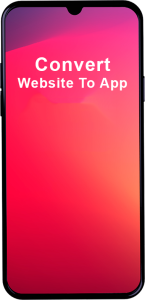Accelerate Web to App Development

In today’s digital era, mobile applications have become an integral part of our lives. From shopping and banking to social media and entertainment, we rely heavily on apps to simplify our daily tasks. As businesses strive to stay ahead of the competition, they recognize the need to expand their online presence by developing user-friendly and efficient mobile applications.
However, developing a mobile app from scratch can be a time-consuming and resource-intensive process. That’s where web to app development comes into play. By leveraging existing web technologies and frameworks, businesses can accelerate the app development process, saving time and minimizing costs.
In this blog post, we will explore the various strategies and tools that can help accelerate web to app development. We will delve into the basics of web to app development, including the selection of the right tools and technologies. We will also discuss the role of APIs and SDKs in bridging the gap between web and app development.
Furthermore, we will compare different app development frameworks, helping you choose the most suitable one for your project. We will also explore the importance of selecting the right database and backend technologies to ensure seamless integration and efficient performance.
Another crucial aspect of accelerating app development is the implementation of agile methodologies. We will delve into agile development principles and discuss how Scrum and Kanban methodologies can facilitate fast-paced development and continuous delivery.
Automation is another key factor in accelerating app development. We will explore the role of automated testing in ensuring quality assurance and discuss continuous integration and deployment (CI/CD) practices that streamline the development process. Additionally, we will highlight the significance of DevOps in optimizing collaboration and efficiency.
To truly accelerate web to app development, it is essential to optimize the user experience. We will emphasize the importance of user interface and user experience design and provide insights into implementing feedback loops and conducting A/B testing to enhance user satisfaction.
By the end of this blog post, you will have a comprehensive understanding of how to accelerate web to app development. Whether you are a business owner or a developer, the strategies and techniques discussed in this post will empower you to create efficient and user-friendly mobile applications in a shorter time frame. So, let’s dive in and unlock the potential of web to app development!
Understanding the Basics of Web to App Development
Web to app development is a process that involves transforming a web application into a mobile application. It allows businesses to leverage their existing web technologies and frameworks to create user-friendly and efficient mobile apps. Understanding the basics of web to app development is crucial for successfully accelerating the development process. In this section, we will explore the fundamental concepts and considerations involved in this process.
1. The Difference between Web and App Development
To comprehend web to app development, it’s essential to understand the key differences between web and app development. Web development primarily focuses on creating websites or web applications that can be accessed through browsers. On the other hand, app development involves building native or hybrid applications that are installed and run directly on mobile devices. Understanding these distinctions will help you navigate the challenges and opportunities of web to app development.
2. Native vs. Hybrid App Development
When transitioning from web to app development, one of the crucial decisions to make is whether to build a native app or a hybrid app. Native apps are developed specifically for a particular platform, such as iOS or Android, using platform-specific programming languages (Swift/Objective-C for iOS, Java/Kotlin for Android). Hybrid apps, on the other hand, are built using web technologies (HTML, CSS, JavaScript) and wrapped in a native container. Understanding the pros and cons of each approach will help you choose the most suitable option for your project.
3. Web Technologies and Frameworks for App Development
Web to app development relies on utilizing existing web technologies and frameworks to accelerate the development process. Popular web technologies such as HTML, CSS, and JavaScript can be leveraged to create mobile apps using frameworks like React Native, Ionic, or Flutter. These frameworks allow developers to write code once and deploy it on multiple platforms, saving time and effort. Understanding the capabilities and limitations of these technologies will enable you to make informed decisions during the development process.
4. User Interface and User Experience Considerations
When converting a web application to a mobile app, it’s crucial to consider the differences in user interface (UI) and user experience (UX). Mobile apps have specific design principles and considerations that are different from web applications. Elements such as screen sizes, touch gestures, and device capabilities need to be taken into account to ensure a seamless and intuitive user experience. Understanding these nuances will allow you to design and develop mobile apps that provide a delightful user experience.
5. Security and Performance Optimization
As with any development project, security and performance optimization are critical aspects of web to app development. Mobile apps often handle sensitive user data, requiring robust security measures to protect user privacy. Additionally, optimizing app performance is vital to ensure a smooth and responsive user experience. Understanding the best practices for securing mobile apps and optimizing performance will contribute to the success of your web to app development efforts.
By grasping the basics of web to app development, you lay a solid foundation for accelerating the development process. This understanding will guide you in making informed decisions, selecting the appropriate technologies and frameworks, and delivering high-quality mobile apps efficiently. Now that we have explored the fundamentals, let’s dive deeper into the tools and technologies that can help accelerate web to app development in the next section.
Choosing the Right Tools and Technologies for Accelerated Development
Choosing the right tools and technologies is crucial in accelerating web to app development. With a plethora of options available, it is essential to carefully evaluate and select the most suitable ones for your project. In this section, we will explore various factors to consider when choosing tools and technologies for accelerated development.
1. App Development Frameworks
App development frameworks play a significant role in accelerating the development process. Frameworks like React Native, Ionic, Flutter, and Xamarin allow developers to build cross-platform mobile apps using a single codebase. These frameworks provide pre-built components, libraries, and tools that streamline development and enhance code reusability. Evaluating the pros and cons of different frameworks will help you choose the one that aligns with your project requirements and development team’s expertise.
2. APIs and SDKs
Application Programming Interfaces (APIs) and Software Development Kits (SDKs) are essential components in web to app development. APIs allow your mobile app to interact with web services and access data from external sources. SDKs provide pre-built tools, libraries, and documentation specific to a platform or service, enabling developers to integrate functionalities seamlessly. Choosing APIs and SDKs that align with your app’s requirements and provide robust documentation and support will expedite the development process.
3. Database and Backend Technologies
Selecting the right database and backend technologies is crucial for the smooth functioning of your mobile app. Consider factors such as data storage requirements, scalability, and performance when choosing a database technology like MySQL, PostgreSQL, or MongoDB. Additionally, evaluate backend technologies like Node.js, Ruby on Rails, or Django based on their ability to handle the app’s business logic, provide secure APIs, and facilitate seamless integration with the frontend.
4. Development Tools and Integrated Development Environments (IDEs)
Having the right set of development tools and IDEs can significantly enhance the productivity and efficiency of your development team. IDEs like Visual Studio Code, Xcode, or Android Studio provide features like code autocompletion, debugging, and project management, which streamline the development process. Additionally, consider tools for version control (e.g., Git), project management (e.g., Jira, Trello), and collaboration (e.g., Slack, Microsoft Teams) to ensure smooth coordination among team members.
5. Testing and Debugging Tools
Testing and debugging are crucial stages in app development to ensure quality and functionality. Choose testing frameworks and tools that facilitate automated testing, such as Jest, XCTest, or Espresso, to streamline the testing process and catch bugs early on. Additionally, consider tools for performance testing, user interface testing, and crash reporting to ensure a polished and stable app.
By carefully selecting the right tools and technologies, you can accelerate web to app development significantly. These tools and technologies streamline the development process, enhance collaboration, and ensure the delivery of high-quality mobile apps. In the next section, we will delve deeper into the different app development frameworks and compare their features, advantages, and limitations.
The Role of Agile Methodologies in Accelerating Development
Agile methodologies have revolutionized the software development industry by promoting iterative and collaborative approaches to project management. In the context of web to app development, implementing agile methodologies can significantly accelerate the development process while ensuring flexibility and adaptability. In this section, we will explore the role of agile methodologies in accelerating development and discuss popular frameworks like Scrum and Kanban.
1. Understanding Agile Development
Agile development is an iterative and incremental approach that emphasizes flexibility, collaboration, and continuous improvement. It promotes adaptive planning, early delivery of working software, and frequent feedback from stakeholders. By embracing agile principles, development teams can respond to changing requirements and deliver high-quality products in a more efficient manner.
2. Implementing Scrum for Fast-Paced Development
Scrum is one of the most widely adopted agile frameworks that promotes iterative development and collaboration. It divides the development process into short, time-boxed iterations called sprints, typically lasting 1-4 weeks. Scrum teams have cross-functional roles, including a product owner, scrum master, and development team. Daily stand-up meetings, sprint planning, and sprint reviews are key components of Scrum. By implementing Scrum, development teams can accelerate the app development process, increase transparency, and foster collaboration.
3. Leveraging Kanban for Continuous Delivery
Kanban is another agile framework that focuses on visualizing and optimizing the flow of work. It uses a Kanban board to track tasks and their progress through various stages of development. Kanban emphasizes limiting work in progress (WIP) and continuously delivering small, incremental updates. It provides flexibility and allows teams to adapt to changing priorities and requirements. By adopting Kanban, development teams can improve workflow efficiency, minimize bottlenecks, and accelerate the delivery of features and updates.
4. Continuous Integration and Continuous Deployment (CI/CD)
Continuous Integration (CI) and Continuous Deployment (CD) are crucial practices in agile development that promote frequent and automated integration, testing, and deployment of code changes. CI involves automatically building, testing, and merging code changes into a shared repository to detect and address issues early on. CD takes CI a step further by automating the deployment of code changes to production environments. By implementing CI/CD pipelines, development teams can ensure faster feedback, reduce manual errors, and accelerate the process of delivering new features and updates.
5. The Role of DevOps in Streamlining Processes
DevOps is a cultural and collaborative approach that focuses on aligning development and operations teams to streamline processes, automate workflows, and enhance collaboration. By integrating development, testing, and deployment processes, DevOps fosters a seamless and efficient development pipeline. DevOps practices such as infrastructure as code, automated testing, and continuous monitoring contribute to faster and more reliable app development. By embracing DevOps principles, development teams can accelerate the delivery of high-quality apps while maintaining stability and reliability.
By leveraging agile methodologies such as Scrum, Kanban, CI/CD, and DevOps, development teams can accelerate web to app development while maintaining flexibility, collaboration, and quality. In the next section, we will explore the implementation of automation in the development process to further optimize efficiency and productivity.
Implementing Automation for Efficient Development
Implementing automation in the web to app development process is crucial for enhancing efficiency, reducing manual errors, and accelerating the overall development timeline. Automation allows for repetitive tasks to be performed swiftly and consistently, freeing up developers’ time to focus on more critical aspects of the project. In this section, we will explore various areas where automation can be implemented to optimize development.
1. Automated Testing for Quality Assurance
Testing is an integral part of the development process to ensure the quality and functionality of the app. Implementing automated testing frameworks such as Selenium, Appium, or XCTest allows for the creation of test scripts that can be executed automatically. These scripts can cover various aspects such as unit testing, integration testing, and UI testing, providing rapid feedback on the app’s stability and functionality. By automating testing, developers can catch bugs early on, streamline the testing process, and accelerate the overall development timeline.
2. Continuous Integration and Continuous Deployment (CI/CD)
Continuous Integration (CI) and Continuous Deployment (CD) practices help in seamlessly integrating code changes, running automated tests, and deploying the app to production environments. Tools like Jenkins, Travis CI, or CircleCI can be utilized to set up CI/CD pipelines. Whenever code changes are committed to the repository, the pipeline automatically triggers the build, runs tests, and deploys the app if all tests pass. This eliminates the need for manual intervention and ensures a more efficient and error-free deployment process.
3. The Role of DevOps in Streamlining Processes
DevOps practices involve bridging the gap between development and operations teams to streamline processes, enhance collaboration, and automate workflows. By utilizing infrastructure as code tools like Terraform or Ansible, developers can automate the provisioning and configuration of infrastructure resources. Additionally, containerization technologies like Docker or Kubernetes allow for consistent deployment across different environments. Implementing DevOps practices enables faster and more reliable development, deployment, and scaling of the app.
4. Code Generation and Templating
Code generation and templating tools can significantly speed up development by automating the creation of repetitive code patterns or boilerplate code. Tools like Yeoman, CodeSmith, or Django’s template engine can generate code based on predefined templates, reducing the time and effort required to write repetitive code manually. This automation allows developers to focus on writing business-specific logic and accelerates the overall development process.
5. Documentation and Knowledge Sharing
Automation can also be implemented in the documentation and knowledge sharing processes. Tools like Swagger or Slate can automatically generate API documentation based on code annotations or comments. Wiki or knowledge base platforms like Confluence or MediaWiki provide automation features for organizing and sharing project-related information. By automating documentation processes, developers can save time and ensure that project knowledge is easily accessible to the entire team.
By implementing automation in various aspects of web to app development, developers can significantly accelerate the development process, reduce manual errors, and improve overall efficiency. The next section will delve into optimizing user experience to ensure faster adoption and better user satisfaction.
Optimizing User Experience for Faster Adoption
Optimizing user experience (UX) is crucial in accelerating the adoption of your mobile app. A smooth and intuitive user interface (UI) coupled with a delightful user experience can attract more users, improve engagement, and drive higher adoption rates. In this section, we will explore key strategies and considerations for optimizing user experience in web to app development.
1. The Importance of User Interface and User Experience Design
User interface (UI) design focuses on creating visually appealing and intuitive interfaces that users can easily navigate. User experience (UX) design, on the other hand, encompasses the overall experience users have while interacting with your app, including factors such as usability, accessibility, and emotional engagement. By investing in thoughtful UI/UX design, you can create an app that is visually appealing, easy to use, and enjoyable for your target users.
2. Implementing Feedback Loops for Constant Improvement
Feedback loops are essential in capturing user feedback, identifying pain points, and continuously improving the app’s user experience. Integrating feedback mechanisms such as in-app feedback forms, user surveys, or user testing sessions allows you to gather valuable insights directly from your users. This feedback can guide iterative improvements, ensuring that your app meets user expectations and evolves with their needs.
3. A/B Testing for Optimal User Experience
A/B testing, also known as split testing, involves presenting users with two or more variations of a feature or design element to determine which one performs better. By conducting A/B tests on different UI/UX elements, such as button placement, color schemes, or navigation options, you can make data-driven decisions to optimize the user experience. A/B testing helps identify the most effective design choices and refine the app based on user preferences and behaviors.
4. Performance Optimization for Seamless User Experience
App performance plays a crucial role in user satisfaction and adoption rates. Slow-loading screens, laggy animations, or unresponsive interactions can frustrate users and lead to abandonment. To optimize performance, consider techniques such as code optimization, caching, lazy loading, and network optimization. Prioritize speed and responsiveness to ensure a seamless user experience and improve the chances of user adoption.
5. Accessibility and Localization Considerations
Making your app accessible to users with disabilities and catering to different languages and cultural contexts can significantly enhance user experience and widen your app’s reach. Consider incorporating accessibility features like screen reader support, adjustable font sizes, and color contrast options. Similarly, provide localization options to adapt your app’s content, language, and cultural aspects to specific target markets. By addressing accessibility and localization, you ensure inclusivity and a personalized experience for diverse user groups.
By optimizing user experience, you create an app that is both user-friendly and engaging, leading to faster adoption and increased user satisfaction. Incorporating thoughtful UI/UX design, implementing feedback loops, conducting A/B testing, optimizing performance, and considering accessibility and localization will contribute to the success of your web to app development efforts.
Congratulations on reaching the end of this comprehensive blog post! Armed with the knowledge and strategies discussed throughout this article, you are well-equipped to accelerate web to app development and deliver high-quality mobile applications.
We hope you found this article interesting. Now, we’d like you to reimagine your website as a sleek, user-friendly mobile app. Here’s your chance to get a glimpse of what could be. Simply enter your website and email address in the form below, and we’ll send you a sample of your very own app.
Think of it as your website’s digital makeover – a transformation into something more accessible, engaging, and mobile. Don’t just dream about the possibilities, enter your details below and one of the team will be in touch,
See what your website will look like as an app.
Have a Question?
Website2App will help you scale your business by converting your website into a mobile app ready for the Apple App Store and the Google Play Store.
To see a preview of your own mobile app, fill out the form above.
Have a question? Contact us at our support page and one of the team will respond.



